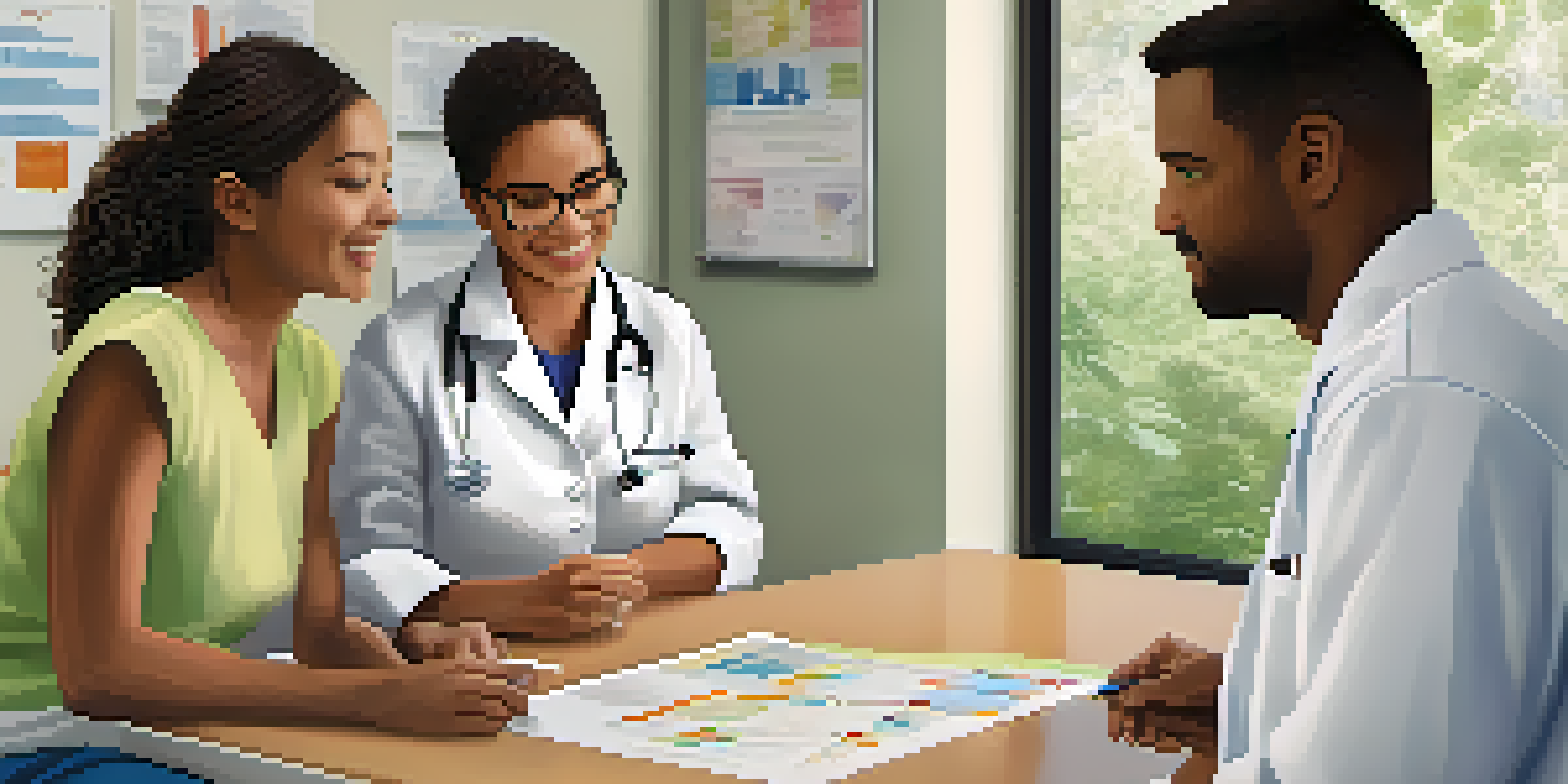Health Literacy and Its Role in Patient Empowerment

What Is Health Literacy and Why It Matters
Health literacy refers to the ability to obtain, process, and understand basic health information. This skill is crucial for making informed decisions about one's health. When patients grasp medical instructions, medication guidelines, and health risks, they become better equipped to manage their health effectively.
Health literacy is a key factor in improving health outcomes and empowering patients to take charge of their own health.
For example, a patient who understands their diagnosis is more likely to follow treatment plans than someone who feels lost in medical jargon. This understanding can lead to better health outcomes and ultimately a higher quality of life. Thus, fostering health literacy is essential in healthcare settings.
Moreover, health literacy isn’t just about reading brochures; it encompasses critical thinking and the ability to navigate the healthcare system. As patients become more health literate, they are empowered to engage in discussions with their healthcare providers, ask questions, and express concerns.
The Link Between Health Literacy and Patient Empowerment
Patient empowerment is about giving individuals the tools and confidence to take charge of their health. Health literacy plays a pivotal role in this empowerment. When patients have a solid understanding of their health conditions and treatment options, they feel more in control.

Think of it like learning to ride a bike; once you understand the mechanics, you gain the confidence to ride independently. Similarly, informed patients are more likely to adhere to treatment plans and make healthier lifestyle choices. This proactive approach can lead to better management of chronic diseases and improved overall well-being.
Health Literacy Empowers Patients
Understanding health information allows patients to make informed decisions and take control of their health.
Furthermore, empowered patients often advocate for themselves within the healthcare system, ensuring they receive the best possible care. By asking questions and seeking clarification, they can help bridge the gap between themselves and their healthcare providers.
Barriers to Health Literacy in Patient Care
Despite its importance, several barriers hinder health literacy. These can include complex medical terminology, low educational levels, and even cultural differences. For instance, a patient who speaks a different language may struggle to understand medical instructions, leading to confusion and potential health risks.
The ability to understand and use health information is essential for making informed decisions and achieving better health outcomes.
Additionally, many healthcare providers assume patients have a certain level of health knowledge, which may not be the case. This disconnect can leave patients feeling overwhelmed and disengaged from their care. Addressing these barriers is crucial to improving health literacy overall.
Moreover, the rise of digital health resources has its own set of challenges. While online information can be empowering, it can also be misleading. Patients must learn to discern credible sources from unreliable ones, which requires a certain level of digital literacy.
Strategies to Enhance Health Literacy
Improving health literacy begins with clear communication from healthcare providers. Using plain language and avoiding jargon can make a world of difference. For example, instead of saying 'hypertension,' a doctor can simply refer to it as 'high blood pressure' to improve understanding.
Additionally, visual aids like diagrams and videos can be incredibly helpful. They can illustrate complex medical concepts in ways that are easier to grasp. When patients can visualize their health conditions, they are more likely to understand them.
Barriers Hinder Health Understanding
Complex medical terminology and assumptions about patient knowledge can create significant obstacles to health literacy.
Moreover, healthcare organizations can implement training programs that focus on health literacy. By educating staff on how to communicate effectively with patients of varying literacy levels, they can foster a more supportive environment that promotes patient empowerment.
The Role of Technology in Health Literacy
Technology plays a significant role in enhancing health literacy. With the rise of mobile health apps and online platforms, patients have access to a wealth of information at their fingertips. These tools can empower patients to track their health, learn about conditions, and stay informed about treatment options.
However, it’s important to ensure that these digital resources are user-friendly and reliable. For instance, apps that provide reminders for medications can help patients stay on track with their treatment plans. When used effectively, technology can bridge gaps in understanding and support informed decision-making.
Furthermore, telehealth services have made healthcare more accessible. Patients can ask questions and receive guidance from healthcare providers without the pressure of an in-person visit. This flexibility allows for ongoing education, which is vital for maintaining health literacy.
The Impact of Health Literacy on Health Outcomes
Research consistently shows that higher health literacy correlates with better health outcomes. Patients who understand their health conditions and treatment options tend to have lower hospitalization rates and improved management of chronic diseases. This ultimately leads to healthier communities.
For instance, a study found that patients with higher health literacy were more likely to follow their medication regimens and attend follow-up appointments. This adherence can significantly reduce complications and healthcare costs, making a strong case for prioritizing health literacy in patient care.
Technology Enhances Health Literacy
Digital tools and telehealth services provide patients with accessible information and support for better health management.
Moreover, when patients are empowered through health literacy, they often take proactive steps to improve their health, such as engaging in preventive care and adopting healthier lifestyles. This shift not only benefits individuals but also contributes to a healthier society as a whole.
Real-World Examples of Health Literacy in Action
Across the globe, various initiatives have successfully improved health literacy. For example, community health programs often provide workshops that teach individuals how to navigate the healthcare system. These programs empower participants with knowledge about preventive care and self-management of chronic conditions.
In the corporate world, employers are increasingly offering health literacy training as part of their wellness programs. This approach not only benefits employees but also reduces healthcare costs for companies. When employees understand their health better, they are less likely to take sick leave and more likely to engage in health-promoting behaviors.

Additionally, schools are beginning to incorporate health literacy into their curriculums. By teaching children about nutrition, exercise, and mental health, we can foster a generation that values informed health choices. These real-world examples highlight the transformative power of health literacy in various settings.